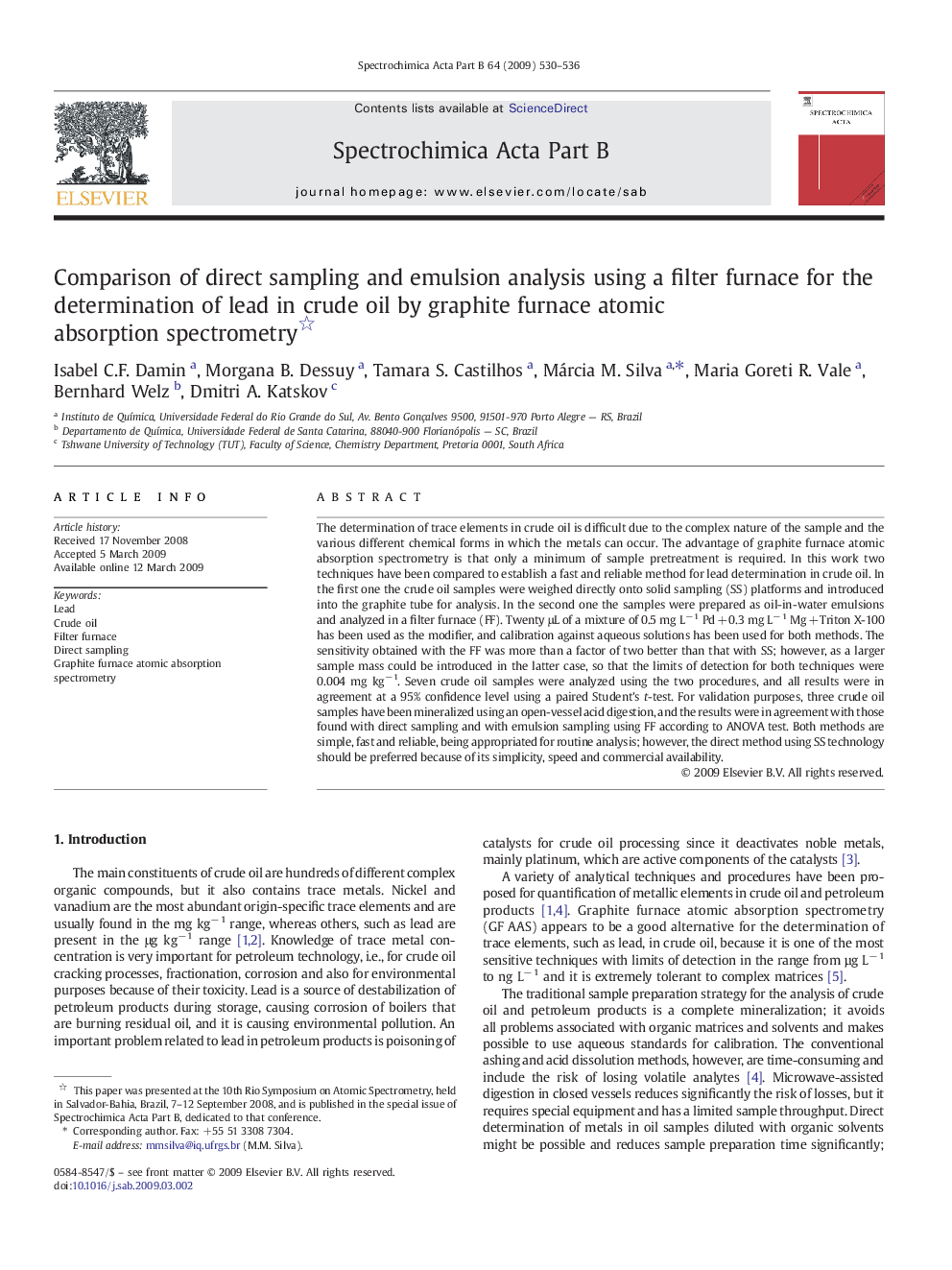| Article ID | Journal | Published Year | Pages | File Type |
|---|---|---|---|---|
| 1241007 | Spectrochimica Acta Part B: Atomic Spectroscopy | 2009 | 7 Pages |
The determination of trace elements in crude oil is difficult due to the complex nature of the sample and the various different chemical forms in which the metals can occur. The advantage of graphite furnace atomic absorption spectrometry is that only a minimum of sample pretreatment is required. In this work two techniques have been compared to establish a fast and reliable method for lead determination in crude oil. In the first one the crude oil samples were weighed directly onto solid sampling (SS) platforms and introduced into the graphite tube for analysis. In the second one the samples were prepared as oil-in-water emulsions and analyzed in a filter furnace (FF). Twenty μL of a mixture of 0.5 mg L− 1 Pd + 0.3 mg L− 1 Mg + Triton X-100 has been used as the modifier, and calibration against aqueous solutions has been used for both methods. The sensitivity obtained with the FF was more than a factor of two better than that with SS; however, as a larger sample mass could be introduced in the latter case, so that the limits of detection for both techniques were 0.004 mg kg− 1. Seven crude oil samples were analyzed using the two procedures, and all results were in agreement at a 95% confidence level using a paired Student's t-test. For validation purposes, three crude oil samples have been mineralized using an open-vessel acid digestion, and the results were in agreement with those found with direct sampling and with emulsion sampling using FF according to ANOVA test. Both methods are simple, fast and reliable, being appropriated for routine analysis; however, the direct method using SS technology should be preferred because of its simplicity, speed and commercial availability.
